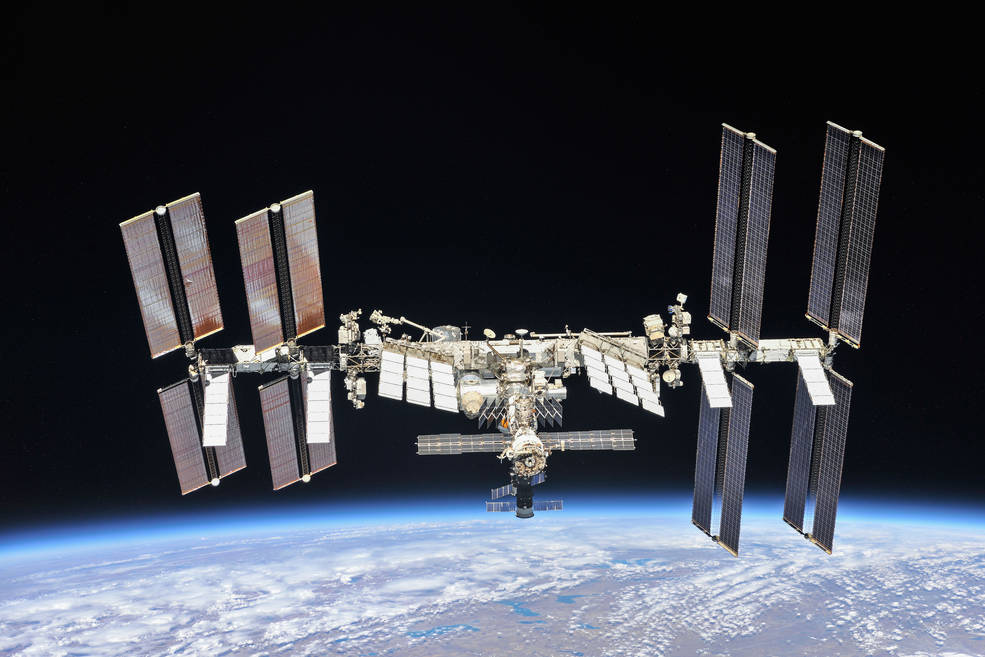
For SpaceUpClose.com & RocketSTEM
CAPE CANAVERAL, FL – The Russian military conducted an Anti-Satellite missile weapons test on Monday, Nov. 15, firing a ground based missile that intercepted and destroyed an old Soviet-era orbiting military satellite thereby creating and scattering a wide spread swarm of low-Earth orbiting debris that also coincided with the orbit of the International Space Station (ISS) – forcing the seven international crew members to take emergency action and seek safety in protective shelter in their emergency escape capsules in case they had to rapidly abandon the research outpost on short notice.
Russia’s dangerous and unprovoked action immediately imperiled and potentially endangered the lives of their own two Russian Roscosmos cosmonauts currently serving today aboard the ISS as well as risking the lives of five more NASA and ESA astronauts resident aboard from the U.S. and Germany.
The seven humans are serving aboard the station as members of Expedition 66.
Likewise three Chinese astronauts serving aboard the Chinese Space Station (CSS) were also placed at potential risk.
The Russian anti-satellite (ASAT) test utilized a direct-ascent anti-satellite (DA-ASAT) missile launch on Monday, Nov. 15, Moscow time that created a ‘debris cloud’ that resulted in the creation of at least 1500 trackable and dangerous larger space debris fragments as well as hundreds of thousands of smaller new orbiting debris fragments and pieces of what amounts essentially to pieces of space junk that will remain in the orbital environment and pollute Earth orbit space for many years to many decades, says U.S. Space Command.
The target of the Russian military DA-ASAT test was COSMOS-1408, a decommissioned Soviet era military satellite launched in 1982.
The now defunct and decimated COSMOS-1408 satellite reportedly had a mass of about 2,200 kilograms and was last tracked in an orbit about 485 kilometers altitude
Military and commercial tracking experts noticed on Monday, Nov. 15 that it was missing.
“Russia tested a direct-ascent anti-satellite (DA-ASAT) missile on Nov. 15, 2021, Moscow Standard Time, that struck a Russian satellite [COSMOS 1408] and created a debris field in low-Earth orbit. The test so far has generated more than 1,500 pieces of trackable orbital debris and will likely generate hundreds of thousands of pieces of smaller orbital debris,” said U.S. Space Command in a Nov. 15 statement.
Russia’s action to destroy an orbiting satellite with an anti-satellite test launched from earth to space and provide no advance warning to the ISS partners, international community, and government and commercial officials, agencies and companies was widely and heftily condemned by leaders around the world – as well as by the Biden Administration and NASA Administrator Bill Nelson.
“The Russian Federation recklessly conducted a destructive satellite test of a direct-ascent antisatellite missile against one of its own satellites,” said State Department spokesman Ned Price, at a Nov. 15 State Department briefing.
“The test has so far generated over 1,500 pieces of trackable orbital debris and hundreds of thousands of pieces of smaller orbital debris that now threaten the interests of all nations.”
The test “will significantly increase the risk to astronauts and cosmonauts on the International Space Station, as well as to other human spaceflight activities.”
“I’m outraged by this unconscionable action,” said NASA Administrator Bill Nelson. “With its long and storied history in human spaceflight, it is unthinkable that Russia would endanger not only the American and international partner astronauts on the ISS, but also their own cosmonauts.
“Their actions are both reckless and dangerous, not even to speak of the threat to the Chinese space station and the taikonauts on board,” Nelson said. “All nations have a responsibility to prevent the purposeful creation of space debris from ASATs and create a safe, sustainable space environment.”
Shortly after the ASAT test NASA mission control woke the astronauts from their sleep around 2 a.m. EST. All seven ISS crewmembers were instructed by their responsible mission control teams to shelter in place in their respective Crew Dragon and Soyuz capsule for their own safety. They remained inside about two hours.
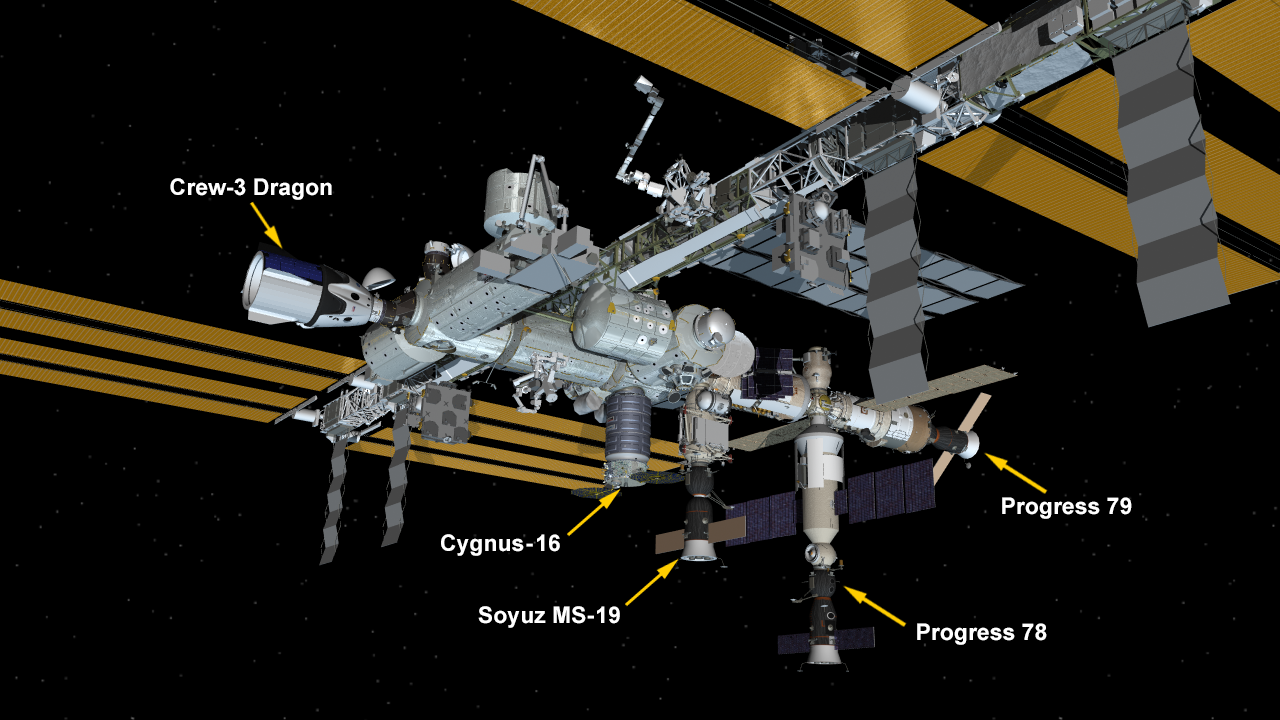
The Crew-3 quartet from the US and Germany had only arrived at the ISS days ago last Thursday, Nov. 11 after launching aboard the SpaceX Crew Dragon Endurance spacecraft from KSC last Wednesday evening, Nov. 10.
Crew-3 is comprised of NASA astronauts Raja Chari, Tom Marshburn, Kayla Barron, and ESA (European Space Agency) astronaut Matthias Maurer.
The remaining 3 crewmembers include NASA Astronaut Mark Vande Hei as well as Russian cosmonauts Pyotr Dubrov and Anton Shkaplerov, commander of the ISS Expedition 66 crew. They sheltered in place inside their Russian Soyuz spacecraft.
The ISS orbits at an altitude of about 260 miles (420 kilometers) and the CSS orbits at about 240 miles (385 kilometers).
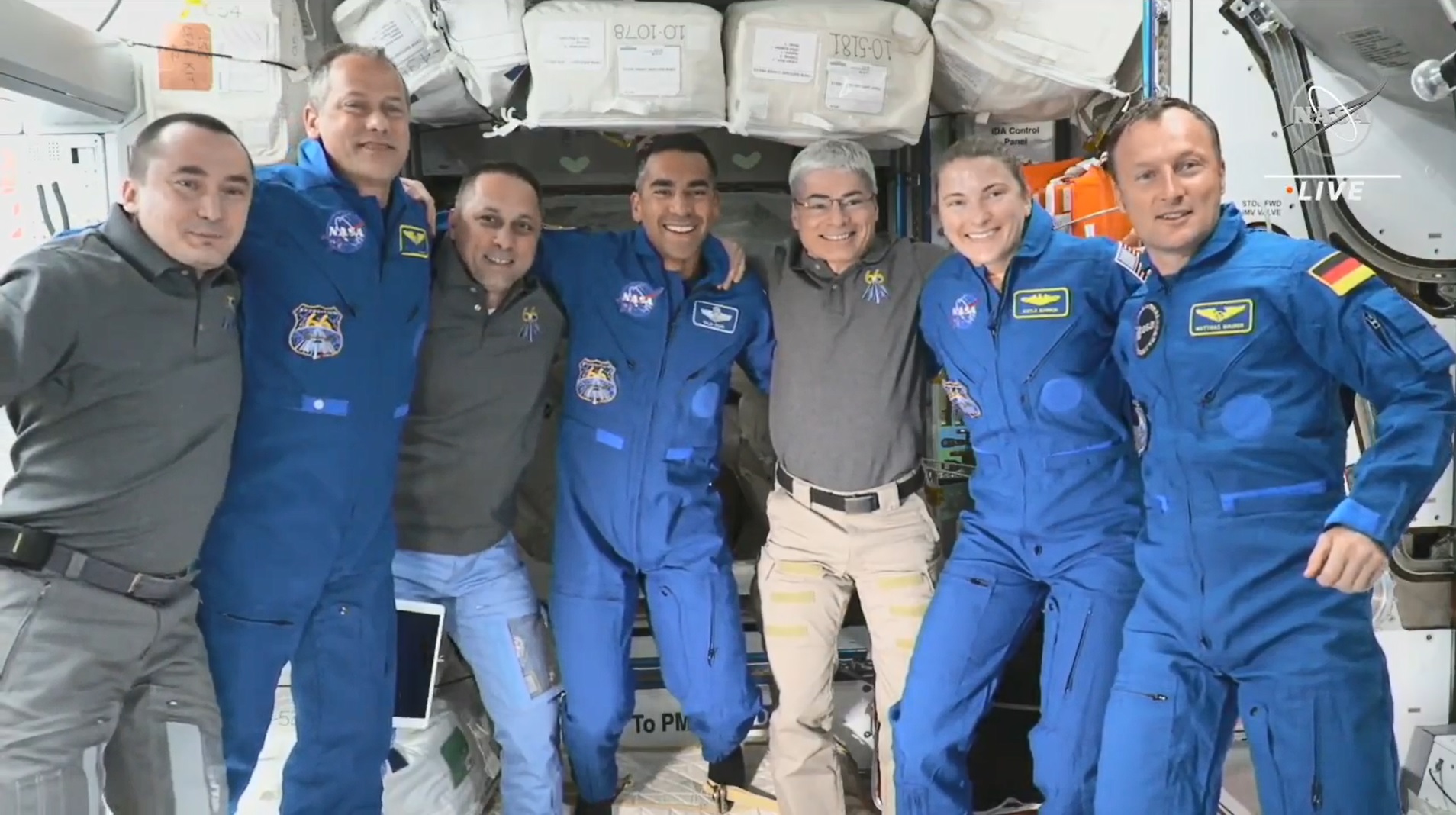
U.S. Defense Secretary Lloyd Austin publicly stated that the danger resulting from the debris cloud created by the Russian DA-ASAT will be recurring in the future.
For the safety of the station and the crew the astronauts and cosmonauts were instructed immediately to close the hatches to all the radial modules on the football field sized station – namely Columbus, Kibo, the Permanent Multipurpose Module, Bigelow Expandable Activity Module, and Quest Joint Airlock.
Hatches between the U.S. and Russian segments remained open said NASA.
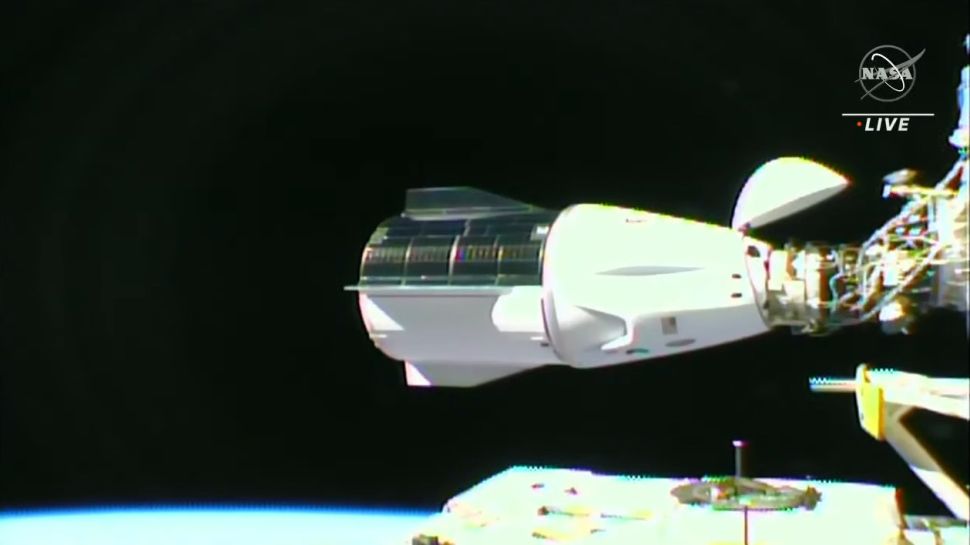
“Russia has demonstrated a deliberate disregard for the security, safety, stability, and long-term sustainability of the space domain for all nations,” said U.S. Army Gen. James Dickinson, U.S. Space Command commander.
“The debris created by Russia’s DA-ASAT will continue to pose a threat to activities in outer space for years to come, putting satellites and space missions at risk, as well as forcing more collision avoidance maneuvers. Space activities underpin our way of life and this kind of behavior is simply irresponsible.”
Russia actions to continue pursuing anti-satellite weaponry and capabilities is placing the peaceful and economically beneficial use of space at risk for the entire world.
“Russia is developing and deploying capabilities to actively deny access to and use of space by the United States and its allies and partners,” Dickinson added. “Russia’s tests of direct-ascent anti-satellite weapons clearly demonstrate that Russia continues to pursue counterspace weapon systems that undermine strategic stability and pose a threat to all nations.”
Beyond the ISS virtually all Earth orbiting satellites are endangered by the continuing and now vastly increased risk posed from orbiting destructive debris fields.
This includes a tremendous variety of science satellites like the Hubble Space Telescope and others, as well as Earth mapping, communications, weather, environmental monitoring, GPS navigation, military satellites and so much more.
Also banking, ATM, cash and and credit card purchases here on Earth could be disrupted.
The list is endless for what potential disruptions caused by ASAT tests, space weaponization or worse yet war in space knocking out vital relay and surveillance satellites
China conducted an ASAT test back in 2007 that continues to have ramifications today.
The ISS occasionally has to be moved to avoid debris from prior ASAT test as well as normal space launches.
The most recent ISS thruster firing to maneuver out of the path of threatening objects took place last week when it performed a debris avoidance maneuver
India conducted an anti-satellite missile test more recently in March 2019 against a small Indian satellite in orbit that generated hundreds of fragments but at a lower altitude.
The US also conducted ASAT tests in 1985 and 2008. The DOD said the latter test was done to avoid the out of control NRO satellite hitting a populated area.
Even small pieces of orbiting space junk and objects only a few inches or so wide are dangerous because they are moving at a velocity of 17,500 MPH (5 miles/sec).
That generates a tremendous force. Its like a powerful sledge hammer smashing into brittle glass.
There are apparently no international treaties regulating or governing ASAT tests.
US State Dept confirms the Russian antisatellite missile test. I condemned the 2007 Chinese test, the 2008 US test, the 2019 Indian test, and I equally condemn this one. Debris-generating antisatellite tests are a bad idea and should never be carried out.
— Jonathan McDowell (@planet4589) November 15, 2021
Meanwhile satellite operators like SpaceX and their Starlink system are proceeding with plans to launch thousand to tens of thousands more new satellites into low-Earth orbit – thus increasing the density and potential chances for dangerous collisions if something goes awry with the satellites
Here is the full statement from NASA Administrator Bill Nelson:
“Earlier today, due to the debris generated by the destructive Russian Anti-Satellite (ASAT) test, ISS astronauts and cosmonauts undertook emergency procedures for safety.
“Like Secretary Blinken, I’m outraged by this irresponsible and destabilizing action. With its long and storied history in human spaceflight, it is unthinkable that Russia would endanger not only the American and international partner astronauts on the ISS, but also their own cosmonauts. Their actions are reckless and dangerous, threatening as well the Chinese space station and the taikonauts on board.
“All nations have a responsibility to prevent the purposeful creation of space debris from ASATs and to foster a safe, sustainable space environment.
“NASA will continue monitoring the debris in the coming days and beyond to ensure the safety of our crew in orbit.”
The crew was awakened and directed to close the hatches to radial modules on the station, including Columbus, Kibo, the Permanent Multipurpose Module, Bigelow Expandable Activity Module, and Quest Joint Airlock. Hatches between the U.S. and Russian segments remain open.
An additional precautionary measure of sheltering the crew was executed for two passes through or near the vicinity of the debris cloud. The crew members made their way into their spacecraft shortly before 2 a.m. EST and remained there until about 4 a.m. The space station is passing through or near the cloud every 90 minutes, but the need to shelter for only the second and third passes of the event was based on a risk assessment made by the debris office and ballistics specialists at NASA’s Johnson Space Center in Houston.
Watch Ken’s continuing reports about SpaceX Crew and Cargo Dragons, Artemis, SLS, Orion and NASA missions, Lucy Asteroid mission, Blue Origin and Space Tourism, SpaceX Starlink, Commercial Crew and Starliner and Crew Dragon and onsite for live reporting of upcoming and recent SpaceX and ULA launches including Crew 1 & 2 & 3, ISS, Solar Orbiter, Mars 2020 Perseverance and Curiosity rovers, NRO spysats and national security missions and more at the Kennedy Space Center and Cape Canaveral Space Force Station.
Stay tuned here for Ken’s continuing Earth and Planetary science and human spaceflight news: www.kenkremer.com –www.spaceupclose.com – twitter @ken_kremer – email: ken at kenkremer.com
Dr. Kremer is a research scientist and journalist based in the KSC area, active in outreach and interviewed regularly on TV and radio about space topics.
………….
Ken’s photos are for sale and he is available for lectures and outreach events
Please consider supporting Ken’s work by purchasing his photos and/or donating at Patreon:
https://www.patreon.com/kenkremer
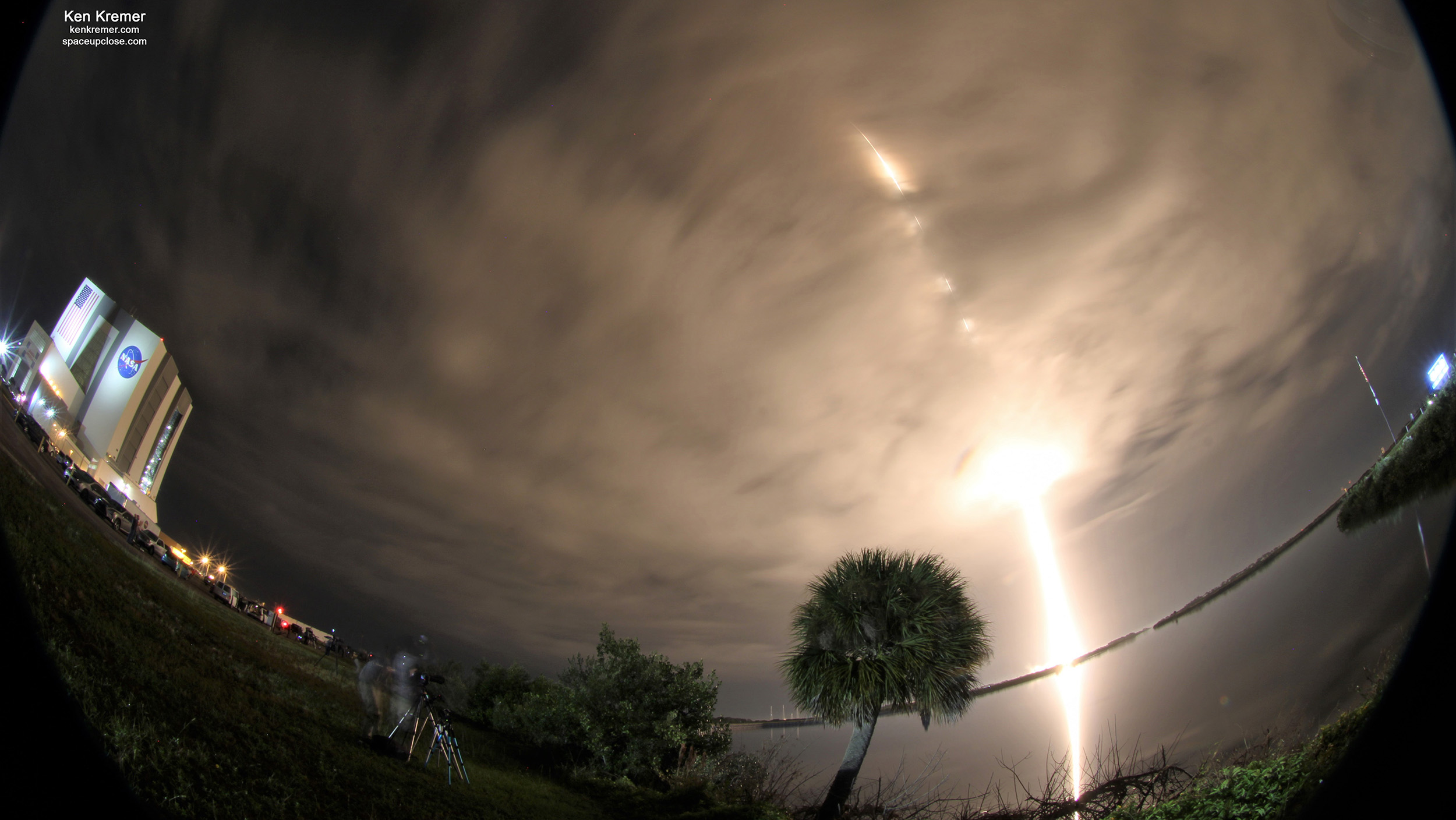
x



